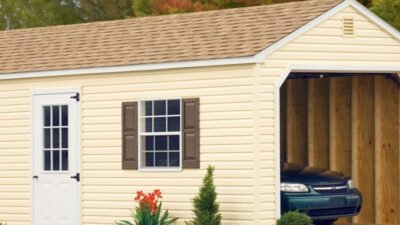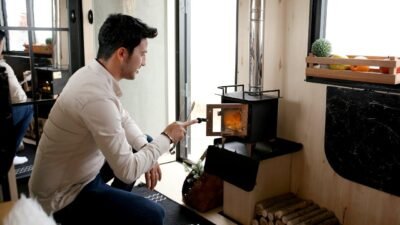Your home isn’t just a structure of bricks and metal; it’s the space where your family feels secure and at peace. But have you ever stopped to ask whether your home truly offers the level of safety and comfort your loved ones deserve? After all, a home shouldn’t just protect you from outside threats – it should also provide an environment that supports health, relaxation, and overall well-being.
In this article, we’ll highlight eight essential home upgrades that balance safety and comfort. These improvements don’t always require a big budget, but they do require a thoughtful look at your living space. By making the right changes, you’ll give your family the gift of peace of mind and a home that feels as good as it looks.
1. Ensure Your Water Is Pure and Filtered
Undoubtedly, water is one of the most basic needs of every family. Your water supply might be adequate, but have you ever assessed its quality? Unfiltered tap water may contain impurities like chlorine, lead, or other contaminants that affect taste and, more importantly, health. Making sure your family has access to clean and safe water is not just a comfort upgrade but a health necessity. Thinking about the cost? Don’t!
Thankfully, there are many affordable water filtration options available. A simple pitcher filter is a great start for smaller households, while under-sink systems or whole-house filters provide broader solutions. These systems can improve taste, reduce harmful elements, and give you peace of mind each time you fill a glass. The long-term benefits far outweigh the initial investment, ensuring your family’s health is supported every day.
2. Upgrade to Safer, Smarter Locks
The front door is your first defense against intruders, and outdated locks often fail to provide the level of security families need today. Traditional keys are easy to lose, and old locks can be picked or broken more easily than you might realize. Modern smart locks are an effective upgrade, combining security with convenience. With features like keyless entry, remote locking and unlocking, and alerts sent directly to your phone, you gain more control over who enters your home. Many smart locks also integrate with home security systems, creating a stronger protective shield.
3. Improve Indoor Air Quality
Air is something you cannot see, yet it plays a major role in the comfort and safety of your home. Indoor air often carries dust, allergens, and even harmful particles that can cause respiratory issues or make allergies worse. Children and older adults are especially sensitive to these conditions, making clean air essential. An easy step is to replace HVAC filters regularly and keep ducts clean. For added protection, air purifiers with HEPA filters remove fine particles and allergens. Simple actions like opening windows when possible, adding indoor plants, and using exhaust fans in kitchens and bathrooms also improve airflow and freshness.
4. Invest in Reliable Smoke and Carbon Monoxide Detectors
Some dangers inside the home are invisible, which is why reliable detectors are critical. Fires and carbon monoxide leaks can happen unexpectedly, and without an early warning system, they quickly turn dangerous. Smoke detectors should be installed on every level of the house and tested regularly to ensure they work. Carbon monoxide detectors are equally important, especially near bedrooms and areas with gas appliances. Many modern detectors now come with longer-lasting batteries or connect to apps that send instant alerts to your phone. This means you can take action right away, whether you are at home or away.
5. Strengthen Your Home’s Insulation
Comfort is not only about what you see but also about how your home feels throughout the year. Poor insulation can lead to drafts in winter, hot spots in summer, and higher energy bills all year long. Strengthening your insulation ensures that your home stays comfortable without wasting energy. Start with small improvements like sealing gaps around doors and windows or adding weather stripping. For larger upgrades, consider adding insulation to attics, basements, or walls. You’ll notice the difference immediately, with a more stable indoor temperature and reduced energy costs.
6. Upgrade to Energy-Efficient Lighting
Lighting is one of the most visible elements of your home, and it plays a big role in energy costs. Traditional bulbs aren’t just notorious for consuming more electricity but also for generating unnecessary heat. Switching to energy-efficient LED lighting is a simple step that can transform the atmosphere while lowering monthly bills. For families looking to add convenience, smart lighting systems allow you to control brightness and schedules from your phone. You can dim lights for a cozy evening or set them to turn on automatically when you’re away, adding both comfort and security. This upgrade pays off quickly, saving money while creating a modern, flexible environment.
7. Add Child and Senior Safety Features
Homes often need adjustments depending on who lives in them. Families with young children or elderly relatives should take extra care to prevent avoidable accidents. Simple additions such as safety gates at stairways, outlet covers, or cabinet locks keep children safe as they explore their surroundings. For seniors, grab bars in bathrooms, non-slip mats, and well-placed handrails reduce the risk of falls. Even small changes like better lighting in hallways or lever-style door handles can make daily living safer and more comfortable. These features may seem minor, but they provide lasting peace of mind and ensure that every family member can move around the house with confidence.
8. Focus on Comfortable Furniture and Layouts
Safety and function are important, but comfort is what makes a house truly feel like a home. Furniture that supports healthy posture, such as ergonomic chairs and supportive mattresses, has a direct impact on daily well-being.
The layout of furniture also matters. Rooms should feel open and easy to navigate, avoiding cluttered paths that can cause trips or make spaces feel cramped. Whether it’s creating a cozy reading corner, arranging seating to encourage conversation, or ensuring beds provide proper rest, these decisions add up to a living space that nurtures relaxation and connection.
Improving your home for safety and comfort is not just about fixing problems; it’s about shaping the kind of environment you want your family to grow in. Each upgrade reflects the care and commitment you put into your home. When you take steps to make your living space healthier, safer, and more welcoming, you are investing not only in the building itself but also in the quality of life it provides. These decisions create a home that grows with your family, adapts to their needs, and stands ready to protect and support them for years to come.



